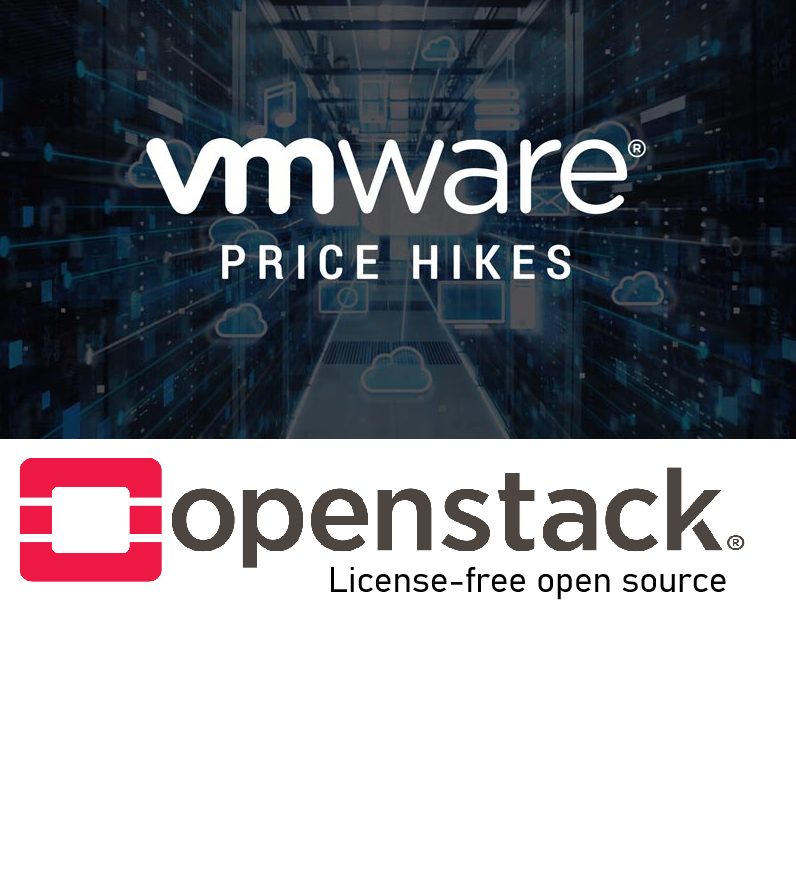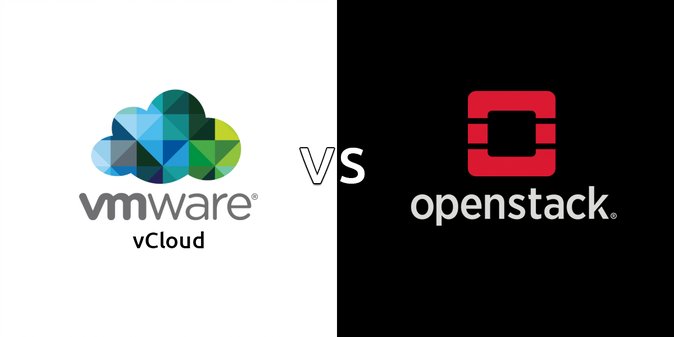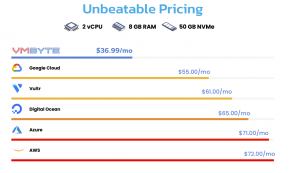
Assessing The Best VMware Alternative:
Save Big with License-Free OpenStack Hosting

Why Companies Are Leaving VMware and Other Expensive Hypervisors
VMware has long been the go-to virtualization platform for on-premise and colocation data centers. But with rising licensing fees and a per-socket, per-core, and per-RAM cost model, many organizations are reconsidering whether VMware still delivers the best value.
And it’s not just VMware. Competing hypervisors like:
- Microsoft Hyper-V
- Nutanix
- Virtuozzo
- Citrix Hypervisor
- Red Hat Virtualization
- Parallels
Often follow similar licensing structures that charge for every CPU core, every GB of RAM provisioned, or even additional features like replication, high availability, or DR (disaster recovery) capabilities.
The True Cost of Traditional Virtualization Licensing
Here’s where costs add up quickly:
- Per-core licensing – Pay for every CPU core your host server uses, regardless of workload utilization.
- Per-VM or per-RAM licensing – Costs increase as you allocate more RAM to VMs.
- Add-on features – Advanced networking, storage, or DR often requires additional licensing fees.
- Support & maintenance contracts – Annual renewals can cost 20–25% of the initial license price.
For enterprises running large workloads, these fees often exceed six figures annually, even before factoring in the physical hardware, power, cooling, and data center costs.
The Hyperscaler Trap
Some companies leave VMware for public cloud hyperscalers like AWS, Azure, or Google Cloud, thinking costs will be lower. While hyperscalers excel at scalability, their on-demand, pay-per-use billing can be unpredictable especially for 24/7 workloads that don’t scale down.
- Example: Running a single 16 vCPU / 64 GB RAM instance in AWS can cost thousands per month, not including data egress fees.
- Colocation equivalent: The same hardware on-premise or in colocation could cost a fraction of that annually.
Why OpenStack Is the Smart Alternative
OpenStack is an open-source cloud platform used by some of the world’s largest companies to run scalable, private and public clouds without the hefty licensing costs.
Fortune 500 examples include:
- Walmart – runs one of the largest private clouds on OpenStack to handle e-commerce workloads
- Comcast – uses OpenStack for video streaming infrastructure
- PayPal – operates on OpenStack for scalability and cost efficiency
- BMW Group – leverages OpenStack in Europe for connected car platforms
The key advantage? OpenStack is license-free — meaning you avoid the per-core and per-VM tax that VMware and others impose. You only pay for the hardware, data center, and support you need.
The Challenge of DIY OpenStack
While OpenStack offers massive cost savings, deploying and managing it on your own can be complex:
- Multi-node architecture setup
- Networking (Neutron) and storage (Cinder/Swift) configurations
- Ongoing upgrades and patching
- Monitoring and scaling workloads
Many organizations lack the internal expertise or don’t want to manage the operational burden.
VMBYTE: All the Benefits of OpenStack — None of the Headaches
VMBYTE delivers OpenStack as a fully managed public cloud service, giving you:
- License-free cost savings passed directly to you
- Global data centers for low-latency access
- High-performance compute & storage for enterprise workloads
- Easy-to-use management platform & API — launch VMs in seconds
- No hardware to manage — we handle everything from networking to upgrades
Simple VMware Migration with No Downtime
Migrating from VMware doesn’t have to mean lengthy downtime or risky re-deployments. With tools like Hystax and other VM-to-VM migration platforms, workloads can be replicated and moved with zero interruption to your users.
VMBYTE’s Professional Migration Team handles:
- Assessment of your current VMware environment
- Planning and mapping workloads to OpenStack instances
- Testing and live cutover with minimal downtime
- Post-migration optimization for cost and performance
Cost Savings: VMBYTE vs Hyperscalers

Because VMBYTE is built on a license-free OpenStack model, customers regularly see 30–70% lower monthly hosting bills compared to traditional hyperscalers.
Looking Ahead If you’re paying for VMware or another costly hypervisor, or struggling with unpredictable hyperscaler bills, it’s time to rethink your infrastructure strategy.
With VMBYTE you get:
- The enterprise-grade power of OpenStack
- Massive cost savings from the license-free model
- A user-friendly, API-driven cloud platform
- Expert migration support for a seamless transition